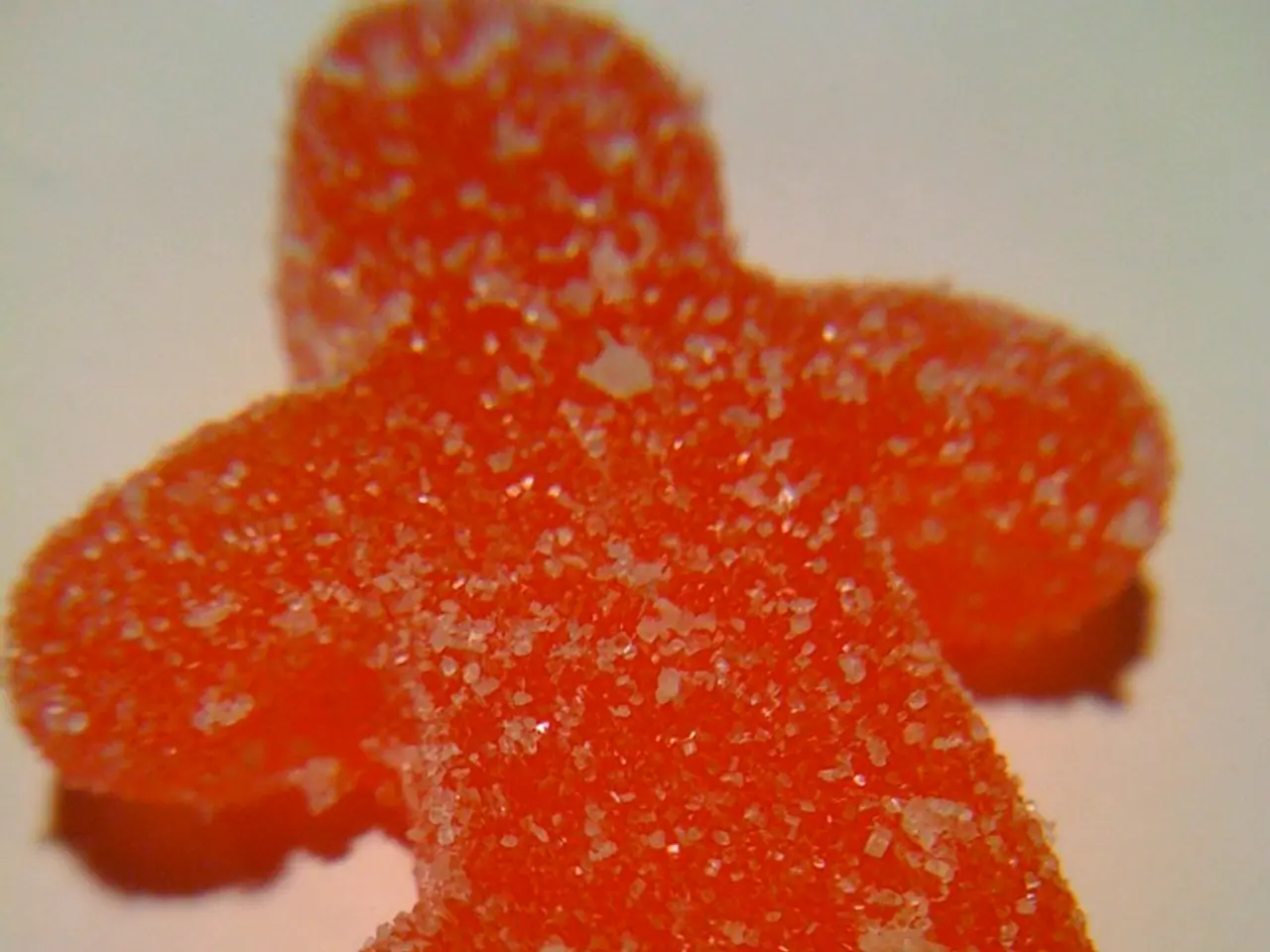Managing hypoglycemia with the use of glucose tablets?
For individuals with diabetes, it's crucial to have fast-acting carbohydrates readily available in convenient places such as the car and by the bed. These quick sources of glucose can help alleviate symptoms of hypoglycemia, a condition characterised by low blood sugar levels.
According to the American Diabetes Association (ADA), treating hypoglycemia in conscious patients involves administering 15–20 grams of fast-acting carbohydrates, primarily in the form of oral glucose. Options include glucose tablets, candy, fruit juice, or regular (non-diet) soda.
Pure glucose is preferred by the ADA due to its faster blood glucose response compared to other carbohydrate sources. For instance, a typical serving of glucose tablets or gels provides around 15 grams of carbs, while 4 ounces (about half a cup) of fruit juice offers a similar amount. Regular soda and candy or sugar-containing foods should also provide an equivalent amount of fast-acting carbs.
After consuming the fast-acting carbs, it's essential to recheck blood glucose levels after 15 minutes, and the treatment can be repeated if hypoglycemia persists, following the "15-15 rule."
It's important to note that fruit juices like orange juice are usually recommended but should be avoided in patients with chronic kidney disease due to their high potassium content.
In summary, maintaining a steady supply of fast-acting carbohydrates and adhering to the ADA's guidelines can ensure rapid normalization of blood glucose levels, facilitating prompt hypoglycemia management.
To prevent hypoglycemia, a person should work with a diabetes healthcare team, ensure their eating plans consist of sufficient carbohydrates, use caution when exercising, and carry a source of fast-acting glucose. In severe cases of hypoglycemia, glucagon should be used for treatment.
Symptoms of hypoglycemia can include sweating and clamminess, confusion, nervousness, shaking, irritation, fast or unsteady heartbeat, dizziness, fatigue and weakness, nausea, hunger, pallor, blurry vision, headaches, clumsiness, tingling or numbness, nightmares, and in severe cases, losing consciousness or having a seizure.
A diabetes healthcare team may suggest using a continuous glucose monitor to help monitor blood sugars correctly. Glucose tablets are chewable sugar tablets that are portable, temperature resistant, and available in various flavours, making them a quick and convenient method for raising blood glucose levels during hypoglycemia.
- Science has shown that for individuals with diabetes, fast-acting carbohydrates are essential in managing symptoms of hypoglycemia, a condition characterised by low blood sugar levels.
- The American Diabetes Association recommends that treating hypoglycemia in conscious patients involves administering 15–20 grams of fast-acting carbohydrates, with options like glucose tablets, candy, fruit juice, or regular soda.
- Mental health is also a significant aspect of health-and-wellness for people with diabetes, as symptoms of hypoglycemia can include confusion, nervousness, and irritation.
- Fitness-and-exercise plays a crucial role in diabetes management, but caution is necessary to prevent hypoglycemia, especially when doing intense physical activities.
- In some cases, therapies-and-treatments such as Medicaid or Medicare might be necessary to cover the cost of managing diabetes, especially in severe cases or when experiencing frequent episodes of hypoglycemia. Nutrition, skin-care, and mental health are additional aspects that should be considered as part of a comprehensive diabetes management approach.




